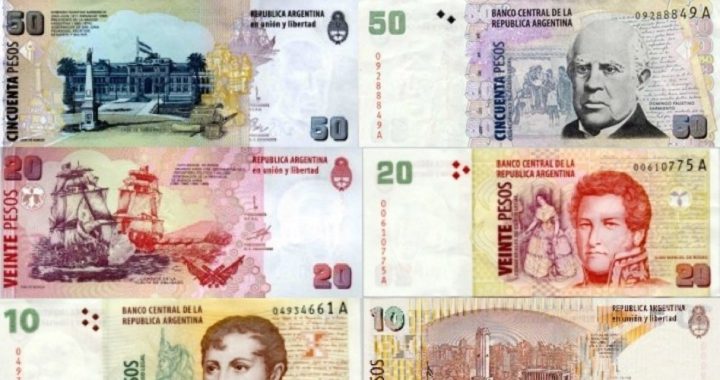
While Wall Street declined by three percent over global growth concerns last week, few were noting or even interested in the 11-percent decline in the Merval, Argentina’s stock market index. It hit a high of 5,970 on Tuesday, January 21, the day before the Argentina government devalued its currency. It closed at 5,337 on Monday. The peso itself has been in decline far longer, having lost nearly 35 percent of its value against the dollar over the last 12 months.
In an address to her country the day after the devaluation, Argentina’s President Cristina Fernandez, in a brilliant display of economic ignorance and hubris, announced her solution to the problem: more government spending. This time, she announced a 600-peso ($84) monthly “stipend” to students, to be paid for with more printing-press money.
This was entirely predictable: Efforts were made to grow Argentina’s economy through deficits, and inflation of the currency rose as the peso lost value, reaching 28 percent last year. As citizens tried to preserve what little purchasing power they had left, Fernandez clamped down with more than 30 different stifling capital controls. This would force those with capital to suffer the brunt of the inflation. Those controls included:
• Increased taxes on credit card purchases
• Limits on online purchases of products made abroad
• Taxes on vacations taken outside the country
• Limits on purchases of foreign currencies
• Confiscating private pension plans, converting them into pesos, and then adding them to the country’s social security fund
• Prohibiting foreign companies with a local presence from sending their profits back home
• Surcharges on airline tickets to foreign destinations
• Limits on ATM withdrawals, and only in pesos, not dollars.
The results were also predictable. Citizens who exited the country packed whatever dollars they had into the bottom of suitcases; others put them in safe deposit boxes or hid them under their mattresses. When local police went on strike for higher wages, riots broke out. That was followed by looting. Shop owners were traumatized. Dominga Kanaza, the owner of a corner grocery in downtown Buenos Aires, refused to open the shutters on her store, telling reporters, “It was scary,” and the worst situation she had seen since similar riots occurred during Argentina’s economic collapse and $95 billion default back in 2001.
Soybean farmers began to hoard their harvests rather than bringing them to market, predicting that soy would retain its value better than the peso.
When Vale, the world’s second largest mining company in the world, cancelled plans to invest $6 billion (American dollars) in a new potash mine in Argentina, things got rough. The company did the math and decided that the gap between Argentina’s official and black-market exchange rates would force it to invest real dollars into a project that would only pay back pesos in profits. Argentina’s chief enforcer, Interior Secretary Guillermo Moreno, demanded a meeting with Vale company officials at which he threatened them with jail unless the agreement was reinstated.
The last time such measures were instituted, they were called colloquially “corralito,” meaning that the free market’s operations were corralled or limited so that the government could work its will on it and on the citizens involved in it. This occurred the last time Argentina tried to resist the inevitable effects of making promises it couldn’t keep and then paying for them with phony money. The “corralito” in 2001 froze bank accounts while forbidding the withdrawal of dollars and only allowing minor withdrawals of pesos. This was instrumental in collapsing the economy.
The economy began to revive when the “corralito” was lifted by Roberto Lavagna, who served as Argentina’s minister of economy and production from 2002 to 2005. As it was lifted, the value of the peso stabilized, trade surpluses began to reflect a growing economy, and unemployment began to decline. The poverty rate dropped, and for a period of time Argentina’s economy thrived.
But with the election of former President Nestor Kirchner’s widow, Cristina, in 2007, government promises abounded, with public works programs announced that were promised to offset the impact of the worldwide Great Recession. That was the beginning of the end of the Lavagna resurgence and the beginning of the new “corallito.”
Unless and until Argentina and its citizens learn from history, it will be forced, once again, to enjoy the fruits of government intervention in the free market, running the risk of turning today’s “corrallito” into a “corralón” — a big corral of even more draconian measures, setting the stage for yet another Argentinian crisis that could equal or exceed that of 1998 through 2001.
A graduate of Cornell University and a former investment advisor, Bob is a regular contributor to The New American magazine and blogs frequently at www.LightFromTheRight.com, primarily on economics and politics. He can be reached at [email protected].



